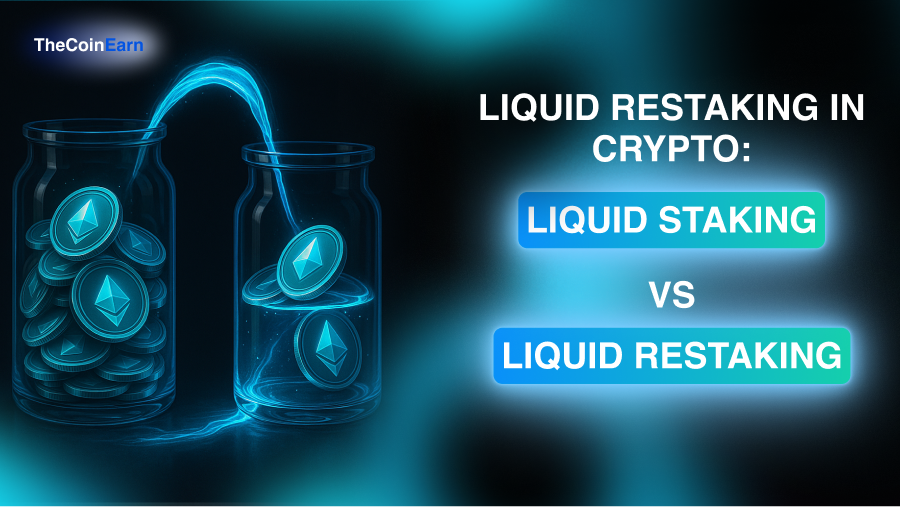What is Restaking in Crypto and How Does It Work?
The cryptocurrency staking industry is constantly growing and creating new options and opportunities. There are already so many staking alternatives that it would take a considerable amount of time to explore them all. Native, liquid staking, restaking, and liquid restaking are the variations that investors and crypto enthusiasts should research before depositing funds. After exploring most of these types in our previous articles, here, we will focus specifically on the restaking meaning and approach overall.
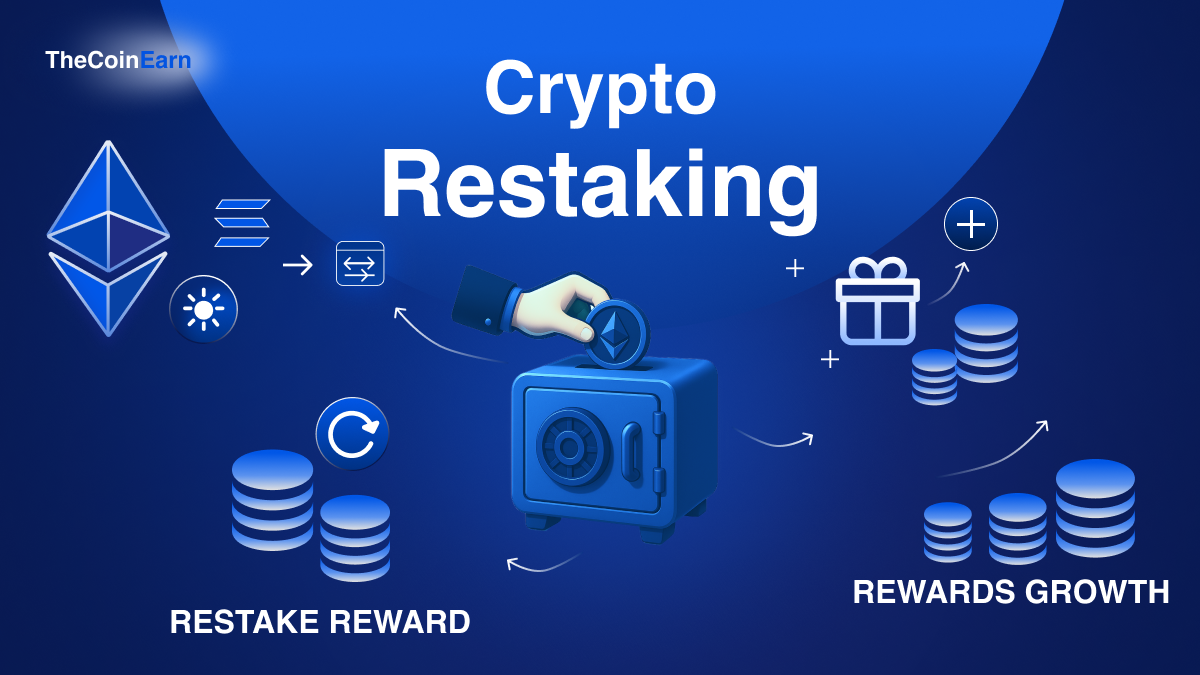
What is Restaking?
Restaking refers to a cryptocurrency deposit concept that is a type of native staking focusing on increasing the efficiency of investment. The idea is to reinvest finances in the main blockchain and other protocols simultaneously. In this way, the invested tokens ensure the security of several networks at the same time, and users receive additional rewards for this.
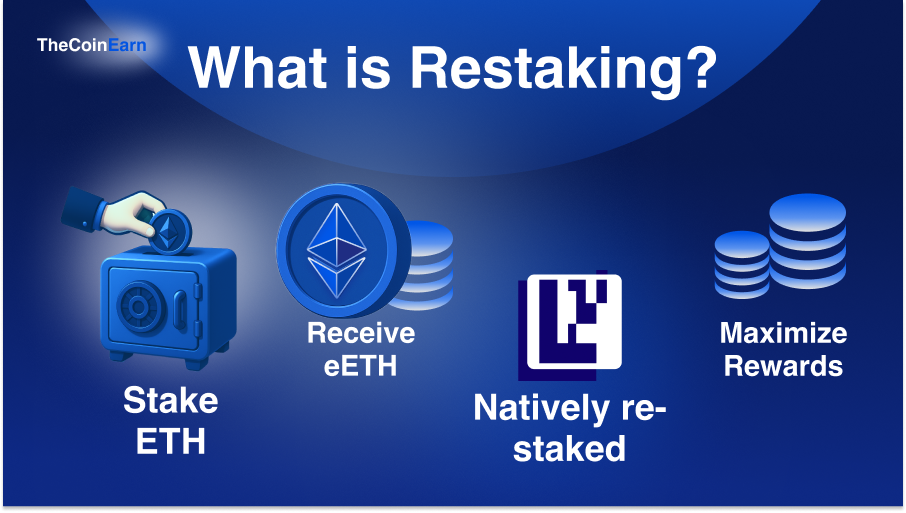
The concept of restaking is an approach to managing decentralized staking resources. It can be applied by validators through primary coins or by ordinary users through the principle of liquid staking and LST. Restaking is beneficial for both investors and network protocols, but its concept increases the risk of slashing.
What is the Role of Restaking in Blockchain Security?
As we have already mentioned, restaking not only brings additional profit to investors but also plays a significant network security role. The security role of restaking in the blockchain includes the following:
Security sharing
Large networks with advanced security, such as Ethereum, can lease security to new networks or services with the help of restaking. It will be more profitable for them at the initial stage than building their own security.
Increased validation responsibility
The responsibility of validators is growing, as they are now responsible not only for the underlying layer but also for other protocols in which they participate through restaking. This increases the risk of losses and reduces the probability of fraudulent behavior by validators.
Flexible security scaling
Protocols can increase their security by involving more restaked assets without the need for centralization or new tokens.
How Crypto Restaking Works
With the help of restaking protocols, validators, or as they are also called restakers, can reinvest their staked coins, such as ETH, SOL, or others, between several protocols at the same time. Similarly, restaking can also be done with liquid tokens through protocols such as Rocket Pool or Lido. That is why this method is called Liquid Restaking. Let's take a closer look at these types:
- Native Restaking
Users who manage the validator node can restake their initial investments. If they want to save their settings in the restaking process, they will need to implement additional software. This software is downloaded and run on the validator node to work with the restaking module.
- Liquid Restaking
Liquid restaking is a unique form of staking that combines the functions of restaking and liquidity. Using this method, an investor can stake coins through liquidity protocols, receive LSTs, and restake them in the corresponding protocols.
Restaking with EigenLayer
The leading restaking protocol is EigenLayer, which is part of the Ethereum network. EigenLayer consists of a set of smart contracts that are programmed to allow Ethereum validators to re-stake assets, thus protecting more network protocols. In its protocol, such sets are called modules or, more specifically, Actively Validated Services (AVS).
Insight! For 2025, the total value locked (TVL) of the EigenLayer protocol exceeds $9.7 billion, and the rewards for AVS operators have reached up to $47 million.
An important mechanism of the AVS is slashing, which is the tool that partially or completely confiscates the validator's assets if the protocol detects any malicious behavior. Each AVS implies its own slashing conditions. By choosing a restaking protocol, investors agree to these conditions in addition to the initial Ethereum slashing measures.
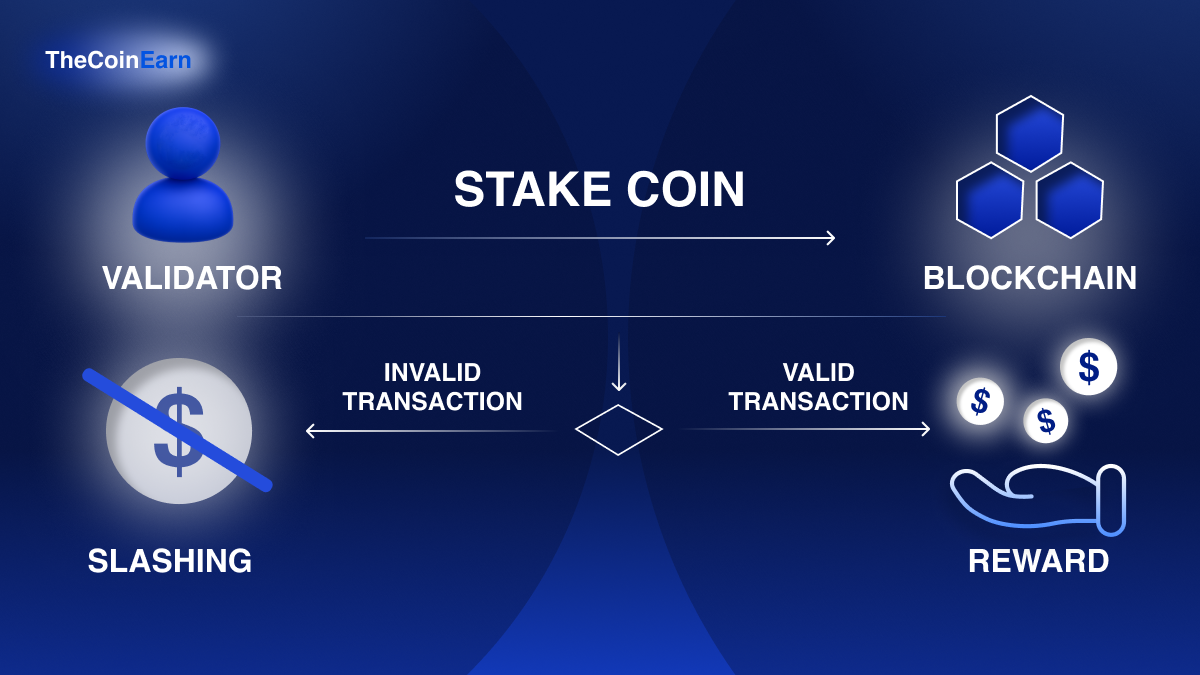
The variety of slashing conditions of each actively validated service is caused by the need to encourage validators to join their network. Additional sanctions protect against a mass attack by fraudulent validators on vulnerable modules.
Similar to delegated PoS models, validators can entrust registered operators to stake on their behalf. This feature opens access to restaking for users who do not have sufficient equipment and funds to meet the system resource requirements of certain modules. They will be able to participate in the networks and receive rewards, excluding commissions charged by the operator.
Another remarkable feature of EigenLayer is the open AVS marketplace, which allows restakers to choose the modules they would like to protect based on the characteristics of that module. The defining characteristics of a module can be its:
- Resources
- Rewards
- Possible risks
- Service sector.
Examples of module selection can also be:
- Validators relying on the success of oracle networks choose to provide pooled security to oracle-based actively validated services in exchange for their own tokens.
- Validators that focus on risky AVSs that are launched on top of the EigenLayer, because high risk brings high profits. By doing so, these risk-taking validators can receive the highest possible reward for their invested assets.
Benefits of Restaking
The advantage of restaking is the opportunity for investors to receive a higher profit for staking while ensuring security for more protocols. Let's take a closer look at the benefits that form the advantage of restaking.
Double Reward
The essence of restaking is literally the re-staking of deposits, which in turn brings double the profit. This is the simplest explanation of the profit from restaking. Currently, the guaranteed income in Ethereum from basic staking is 3-4%, together with the restaking protocols you choose, this number rises to 7-10% of the Annual Percentage Yield (APY).
Starter Security for New Protocols and Networks
Thanks to restaking, large networks can lend security to startups. In the first stages, new projects face difficulties in developing a reliable security system. The mechanism of restaking allows them to involve a large number of validators, which will ensure decentralization, leading to increased security. The cost of such security will be the offering of attractive rewards for validators to encourage them to join. This kind of security will be more cost-effective than building a security infrastructure from scratch.
Increasing Security to Meet Demand
The restaking mechanism helps protocols achieve better security flexibility by reducing or scaling it to meet the needs of the network in response to demand. In this way, protocols can cost-effectively increase security at peak demand points by contracting with validators. When the network returns to stability, the number of validators can be reduced.
Risks of Restaking
Although restaking provides opportunities for users to get higher profits due to increased investment efficiency and for modules to improve security, it still does not reduce certain common risks. Below, we will discuss them.
Slashing
Slashing risks exist regardless of the type of staking. In the case of restaking, the risk of slashing, as well as the reward, doubles due to repeated staking in another protocol. Slashing entails the risk of losing a significant percentage of the validator's deposited assets. By staking in the module, you agree to the rules of the contract. In case of malicious behavior or violation of the rules, stakers are punished by slashing penalties.
High Competition for Modules
EigenLayer has a large number of modules that want to attract validators. They are attracted by special contract rules and high rewards. Restakers naturally choose modules with higher rewards in order to maximize their profits. For modules with low rewards, this means the risk of being left with a minimum number of validators.
Impact on Layer 1 of Blockchain
When restaking protocols suffer significant losses, they may require Ethereum intervention, such as a fork or re-org. As a result, it can cause controversy around which version of Layer 1 is canonical.
How to Restake Cryptocurrency?
The staking mechanism is an essential cog in the consensus of the PoS. It is currently used by many of the world's largest blockchain networks. As you may already know, the staking process involves blocking cryptocurrency provided by validators to protect the network and gaining a reward for it.
Restaking, in turn, focuses on extending the security of large blockchain networks to other services, such as oracle networks, blockchain bridges, and others. The benefit for validators is the generation of different rewards depending on the platform to which the security assistance was provided. Now, we provide you with a surface instruction on how users get involved in restaking and how you can too.
1. You stake a certain amount of cryptocurrency, be it ETH, SOL, or ADA, through an exchange, wallet, or decentralized protocol.
2. After a certain period, you receive your first reward, which is usually an additional amount of tokens to your staked ones.
3. After receiving the reward, you can manually add it to the initial staking. For restaking, you can automatically reinvest it through a platform that supports this option.
4. With each cycle, your rewards will get bigger and bigger as your stake amount.
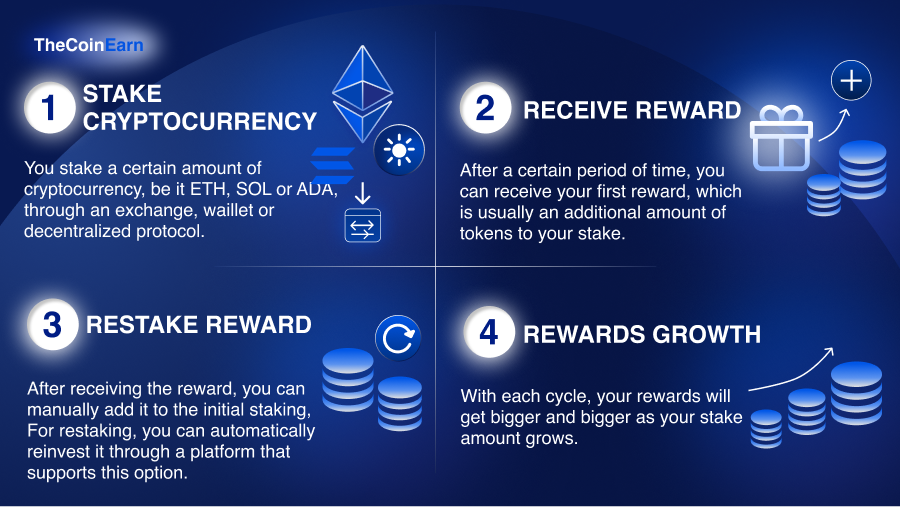
Best Restaking Protocols
Now that you know the sequence of steps in the restaking process, it's time to choose the protocol that will work best for you. Our list provides an overview of the various leading offerings.
EigenLayer: Ethereum-based Restaking Protocol

EigenLayer is the first ETH restaking protocol for securing other protocols. With it, investors can restake their Ethereum tokens or LSTs to provide additional security services to Ethereum blockchain modules. The EigenLayer protocol allows the restaking of such LSTs as Ankr (ankrETH), Lido (stETH), and Coinbase (cbETH).
Jito: Solana-based Restaking Protocol

The restaking protocol on Solana is Jito. It is used to stake tokens such as SOL, JitoSOL, and mSOL on multiple networks. Jito also provides users with liquid restaking tokens called Vault Receipt Tokens. They are available both for simple position maintenance and for use in DeFi applications.
BounceBit: Bitcoin-based Restaking Protocol

Bitcoin also has its own innovative restaking protocol. BounceBit allows BTC restaking through a PoS mechanism, combining the security of Bitcoin with the ability to make a profit in the DeFi ecosystem.
Final Thoughts on Restaking
Restaking is a highly valuable approach in the cryptocurrency space. Crypto enthusiasts and investors can use it to increase the efficiency of their invested finances. For protocols, and especially modules, its presence guarantees such a vital aspect of cryptocurrency as security. Although the risks are usually correspondingly higher in relation to the profits, if you are risk-averse, restaking will definitely serve you well.
If you want to consider more platforms to participate in restaking, our TheCoinEarn platform has as many as 24 staking platforms, along with analytics for each of them. Don't hesitate and choose now!


